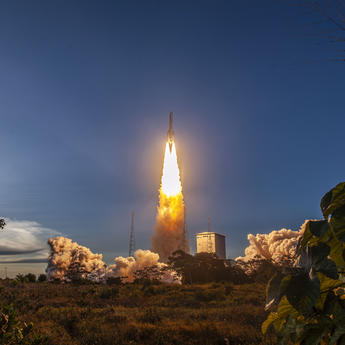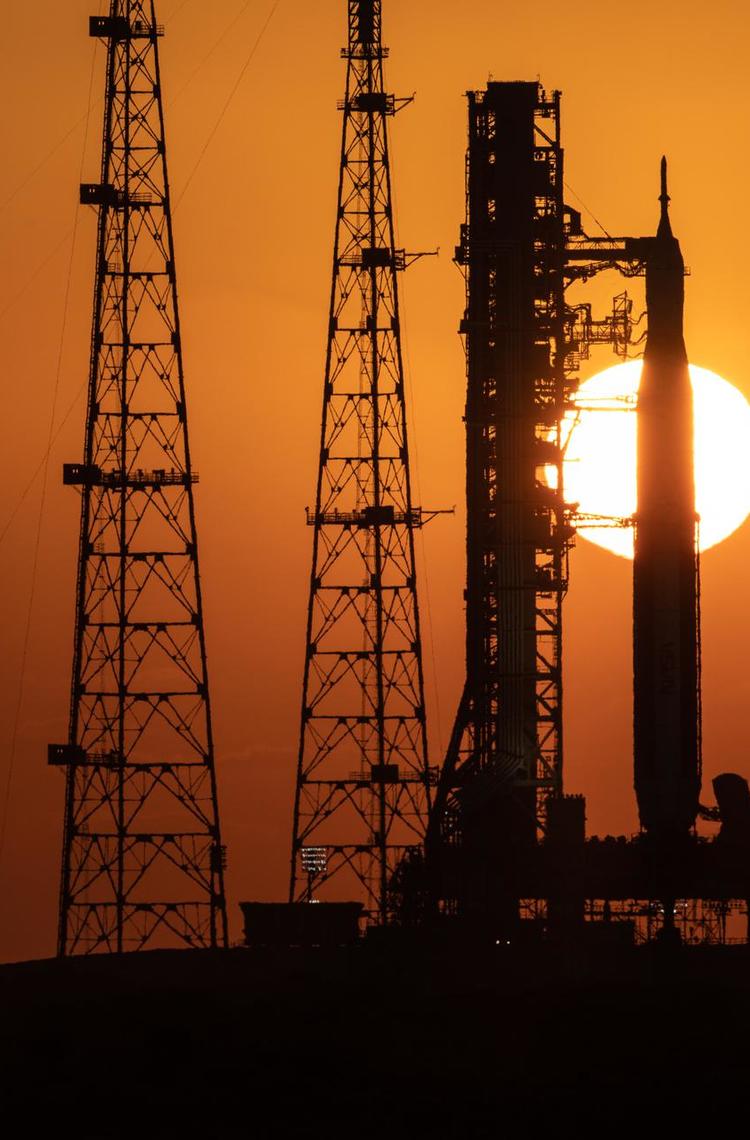The successful countdown rehearsal for the upcoming Artemis I Moon mission – which includes the Airbus designed-and-built European Service Module for the Orion crewed spacecraft – marked another step closer to a new era of space exploration for humankind.
The wet dress rehearsal milestone completed last week realistically represented the final 41 hours before liftoff of Artemis I’s massive Space Launch System rocket from the Kennedy Space Center in Florida, and was closely monitored by Airbus Defence and Space team members who will support the actual mission when Orion and its European Service Module (ESM) are sent to the Moon and back later this year. NASA hopes to announce a target launch date at the end of this week.
Airbus is one of the few companies in the world entrusted to put humans in space. Additionally, Artemis is the first time that Europe has been given the responsibility for critical functions on a human spaceflight mission – working with NASA, which leads an international effort to return to the Moon and establish a sustainable presence there.
The ESM was built by Airbus in Bremen under contract to the European Space Agency (ESA). It is the Orion spacecraft’s main propulsion system, while also providing orbital manoeuvring and positioning control. Equally importantly, the ESM provides the spacecraft’s crew with critical elements of life support – including water and oxygen – and it regulates thermal conditions of the Orion spacecraft.
Among the Airbus employees following the Artemis I countdown rehearsal were Jan-Hendrik Meiss, the ESM’s Propulsion Lead Engineer who has been working on the European Service Module programme since joining the company in 2013; and Horst Tjaden, an employee at Airbus for 30 years, who is the Safety and Mission Engineer for ESM.
“Having Artemis I on the launch pad for this rehearsal was a highly emotional moment, and it’s exciting to see how all the work has come to reality,” Meiss said. “I am very proud of being a European and taking part in this historic programme, especially showing how Europe has the capability to work with the U.S. as a full partner in human space exploration.”

Artemis Mission - © NASA
He noted that during the Artemis I mission, Orion will fly further than any spacecraft built for humans has ever flown – travelling thousands of miles beyond the Moon over the course of a multi-week mission.
For Tjaden, Orion brings forward the expertise gained from his involvement in the Automated Transfer Vehicle programme, in which Airbus developed and deployed five resupply spacecraft that serviced the International Space Station from 2008 to 2015.
“The Automated Transfer Vehicle was built and operated to the standards of a human-rated system, so the same processes are applied to Orion’s ESM during design, development and operation,” Tjaden explained. “Airbus fully proved its capabilities to develop a highly reliable system with the ATV, positioning us for these future exploration missions.”
During the Orion missions, Tjaden will be working in the Netherlands with the European Space Agency’s team at ESTEC (the European Space Technology and Research Centre), while Meiss will be working in the NASA mission control centre in Houston, Texas.
After completion of the Artemis I mission, the second flight of Orion will carry an astronaut crew – testing the critical systems with humans on board. This will set the stage for future exploration missions when Orion missions will assemble a station in lunar orbit for deep-space operations, including missions to land on the Moon’s surface and eventually extend human exploration further into the solar system than ever before.
As architect and manufacturer of the ESM, Airbus is currently contracted to supply six of the Orion service modules for the European Space Agency, paving the way for an exciting new era of space exploration.

Artemis Mission - © NASA
Latest News
Continue Reading

Airbus ships fourth European Service Module for Artemis IV
Press Release
Space
Fourth European Service Module (ESM-4) is ready to leave Airbus’ facilities in Bremen, Germany, and be shipped to NASA’s Kennedy Space Center, Florida, USA
Sentinel-1D: the radar that never sleeps
Web Story
Space

Airbus-built SpainSat NG-II secure communications satellite successfully launched
Press Release
Space

Airbus, Leonardo and Thales sign Memorandum of Understanding to create a leading…
Press Release
Company

Tracking air pollution from space
Web Story
Space
